Saving Trees Saves Taxes
Trees are good citizens and if looked after wisely they can help a municipality like ours save large sums of money that could then be redirected for other purposes.
Costly Pavement
“The asphalt paving on streets contains stone aggregate in an oil binder. Without tree shade, the oil heats up and volatizes, leaving the aggregate unprotected. Vehicles then loosen the aggregate which grinds down the pavement. Streets are overlaid or slurry sealed every 7-10 years over a 30-40 year period, after which reconstruction is required. A slurry seal costs approximately $0.27/sq.ft. or $50,000/linear mile (US figures) but because the oil does not dry out as fast on a shaded street as it does on a street with no shade trees, this street maintenance can be deferred. The slurry seal can be deferred from every 10 years to every 20-25 years for older streets with extensive tree canopy cover.” (Tree Guidelines for San Joaquin Valley Communities 1999)
Expensive Storm Water Management
“In Milwaukee, where urban trees cover about 16 per cent of the city, trees reduce storm water flows by 22 per cent. The city saves an estimated $15.4 million by avoiding the construction of additional retention capacity. In Austin, heavy rains make storm water management a priority issue. Austin's tree canopy, almost twice that of Milwaukee's at approximately 30 per cent, reduced storm water flow by 28 per cent, providing the city with an estimated $122 million in savings.” (MacDonald, 1996)
“The canopy of a street tree absorbs rain, reducing the amount of water that will fall on pavement and then must be removed by a storm water drainage system. In one study, an 8-year old Cork Oak intercepted 27 percent of the gross rainfall, while a 9-year old Bradford Pear intercepted 15 percent. Savings are possible since cities can install surface water management systems that handle smaller amounts of runoff.” (Xiao, et. al., 2000)
Thrifty Shading and Protecting
“One tree that shades your home in the city will also save fossil fuels, cutting CO2 build-up as much as 15 forest trees.” (National Arbor Day Foundation–US)
Placing deciduous trees on the south and west sides of your home will shade you in the summer and allow sunlight in, in winter. Fir trees on the north side of your home will protect you from cold winter winds.
Research reports savings of between 10 and 15 % on winter heating costs thanks to trees acting as windbreaks, and cooling cost reductions of 20 & 50% in summer due to shade and cooling through evapotranspiration.” (Heisler, 1986)
Cleaning Up Our Environment
“Poplar & cottonwood trees can break down carcinogenic groundwater contaminants such as trichloroethylene (TCE) and Atrazine into harmless compounds.” (Black, 1995; EPA, 1996)
“Trees, especially those with large leaf surfaces, absorb and trap airborne dirt and chemical particles such as nitrogen oxide, sulphur dioxide, carbon monoxide and ozone. Trees also help by reducing wind speed so that heavy particles settle out.” (Nowak 1994, Harris 1992)
Decreased Crime
Studies in the US show that developments with large trees have less crime: “compared with apartment buildings that had little or no vegetation, buildings with high levels of greenery had 52 % fewer total crimes, including 48% fewer property crimes and 56 % fewer violent crimes.”
“Residents from buildings with trees reported using more constructive, less violent ways of dealing with conflict in their homes.” (Kuo and Sullivan, 2001 & 1999)
Increased Real Estate Values
“Several studies have shown that the value of homes in neighbourhoods with trees are higher than in those of comparable neighbourhoods without trees. In addition, neighbourhood green spaces or greenways typically increase the value of properties located nearby.” (Theriault et al, 2002)
Trees added $9,500 US, or more than 18% to the average sale price of a residence in a suburb of Rochester, New York. (D.J. Nowak, Benefits of Community Trees, USDA)
Increased Economic Sustainability
Businesses leasing spaces in treed developments find their workers more productive and absenteeism reduced. Trees enhance community economic stability by attracting businesses and tourists. People linger and shop longer along tree lined streets. (Michigan State University Extension, Urban Forestry; University of Washington Study)
Traffic Calming
Tall trees give the perception of making the street feel narrower, slowing people down. (National Arbor Day Foundation-US)
Costs Vs. Benefits
A study of the benefits and costs of tree planting in Chicago found that the projected value of trees (e.g. pollution reduction, energy saving, property value) is nearly three times greater than the projected costs. (McPherson et al., 1995)
“Each of us is responsible for over 4,600 pounds of carbon per year…In one year a single acre of trees can absorb as much carbon as is produced by a car driven 26,000 miles…The death of one 70 year old tree would return over 3 tons of carbon to the atmosphere.” (International Society of Arborists)
Priceless: Health & Well Being
Trees create a sense of well being that relaxes you, lowers your blood pressure and slows you down. “In laboratory research, visual exposure to settings with trees has produced significant recovery from stress within five minutes, as indicated by changes in blood pressure and muscle tension.” (Ulrich, 1984)
Symptoms of children with Attention Deficit Disorder (ADD) are relieved after contact with nature. The greener the setting the more the relief. By comparison, activities indoors such as watching TV, or outdoors in paved, non-green areas leave ADD children functioning worse. (Taylor, et al., 2001)
“Trees purify the air; they also purify the mind……if you want to save your world, you must save the trees.”
The Trees of Endor
Quotes and statistics used in this piece may be found at
http://www.treesaregood.com/home.aspx
http://www.treelink.org/docs/about.php
http://www.coloradotrees.org/benefits.htm
See also City of Saskatoon, Urban Forestry branch
This leaflet has been prepared by Sue Stroud
“The asphalt paving on streets contains stone aggregate in an oil binder. Without tree shade, the oil heats up and volatizes, leaving the aggregate unprotected. Vehicles then loosen the aggregate which grinds down the pavement. Streets are overlaid or slurry sealed every 7-10 years over a 30-40 year period, after which reconstruction is required. A slurry seal costs approximately $0.27/sq.ft. or $50,000/linear mile (US figures) but because the oil does not dry out as fast on a shaded street as it does on a street with no shade trees, this street maintenance can be deferred. The slurry seal can be deferred from every 10 years to every 20-25 years for older streets with extensive tree canopy cover.” (Tree Guidelines for San Joaquin Valley Communities 1999)
Expensive Storm Water Management
“In Milwaukee, where urban trees cover about 16 per cent of the city, trees reduce storm water flows by 22 per cent. The city saves an estimated $15.4 million by avoiding the construction of additional retention capacity. In Austin, heavy rains make storm water management a priority issue. Austin's tree canopy, almost twice that of Milwaukee's at approximately 30 per cent, reduced storm water flow by 28 per cent, providing the city with an estimated $122 million in savings.” (MacDonald, 1996)
“The canopy of a street tree absorbs rain, reducing the amount of water that will fall on pavement and then must be removed by a storm water drainage system. In one study, an 8-year old Cork Oak intercepted 27 percent of the gross rainfall, while a 9-year old Bradford Pear intercepted 15 percent. Savings are possible since cities can install surface water management systems that handle smaller amounts of runoff.” (Xiao, et. al., 2000)
Thrifty Shading and Protecting
“One tree that shades your home in the city will also save fossil fuels, cutting CO2 build-up as much as 15 forest trees.” (National Arbor Day Foundation–US)
Placing deciduous trees on the south and west sides of your home will shade you in the summer and allow sunlight in, in winter. Fir trees on the north side of your home will protect you from cold winter winds.
Research reports savings of between 10 and 15 % on winter heating costs thanks to trees acting as windbreaks, and cooling cost reductions of 20 & 50% in summer due to shade and cooling through evapotranspiration.” (Heisler, 1986)
Cleaning Up Our Environment
“Poplar & cottonwood trees can break down carcinogenic groundwater contaminants such as trichloroethylene (TCE) and Atrazine into harmless compounds.” (Black, 1995; EPA, 1996)
“Trees, especially those with large leaf surfaces, absorb and trap airborne dirt and chemical particles such as nitrogen oxide, sulphur dioxide, carbon monoxide and ozone. Trees also help by reducing wind speed so that heavy particles settle out.” (Nowak 1994, Harris 1992)
Decreased Crime
Studies in the US show that developments with large trees have less crime: “compared with apartment buildings that had little or no vegetation, buildings with high levels of greenery had 52 % fewer total crimes, including 48% fewer property crimes and 56 % fewer violent crimes.”
“Residents from buildings with trees reported using more constructive, less violent ways of dealing with conflict in their homes.” (Kuo and Sullivan, 2001 & 1999)
Increased Real Estate Values
“Several studies have shown that the value of homes in neighbourhoods with trees are higher than in those of comparable neighbourhoods without trees. In addition, neighbourhood green spaces or greenways typically increase the value of properties located nearby.” (Theriault et al, 2002)
Trees added $9,500 US, or more than 18% to the average sale price of a residence in a suburb of Rochester, New York. (D.J. Nowak, Benefits of Community Trees, USDA)
Increased Economic Sustainability
Businesses leasing spaces in treed developments find their workers more productive and absenteeism reduced. Trees enhance community economic stability by attracting businesses and tourists. People linger and shop longer along tree lined streets. (Michigan State University Extension, Urban Forestry; University of Washington Study)
Traffic Calming
Tall trees give the perception of making the street feel narrower, slowing people down. (National Arbor Day Foundation-US)
Costs Vs. Benefits
A study of the benefits and costs of tree planting in Chicago found that the projected value of trees (e.g. pollution reduction, energy saving, property value) is nearly three times greater than the projected costs. (McPherson et al., 1995)
“Each of us is responsible for over 4,600 pounds of carbon per year…In one year a single acre of trees can absorb as much carbon as is produced by a car driven 26,000 miles…The death of one 70 year old tree would return over 3 tons of carbon to the atmosphere.” (International Society of Arborists)
Priceless: Health & Well Being
Trees create a sense of well being that relaxes you, lowers your blood pressure and slows you down. “In laboratory research, visual exposure to settings with trees has produced significant recovery from stress within five minutes, as indicated by changes in blood pressure and muscle tension.” (Ulrich, 1984)
Symptoms of children with Attention Deficit Disorder (ADD) are relieved after contact with nature. The greener the setting the more the relief. By comparison, activities indoors such as watching TV, or outdoors in paved, non-green areas leave ADD children functioning worse. (Taylor, et al., 2001)
“Trees purify the air; they also purify the mind……if you want to save your world, you must save the trees.”
The Trees of Endor
Quotes and statistics used in this piece may be found at
http://www.treesaregood.com/home.aspx
http://www.treelink.org/docs/about.php
http://www.coloradotrees.org/benefits.htm
See also City of Saskatoon, Urban Forestry branch
This leaflet has been prepared by Sue Stroud




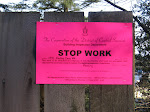






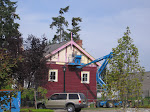
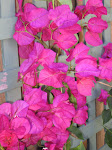
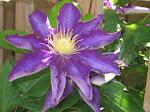



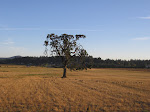
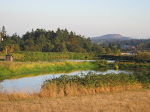

1 comment:
Hi Sue,
Great article.
Yes, saving trees like the cork oak is critical, especially in regions like the Montado forests.
The cork oak forests and the products born of them play a valuable role in retaining the earth's CO2. The Montados are responsible for nearly 4.8 million tons of the worlds CO2 retention per year.
Another reason to save the trees. You can read more about this on our blog. We hope you visit.
Team Wicanders
Post a Comment